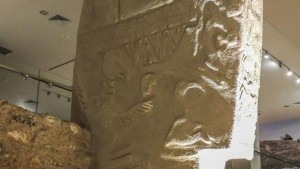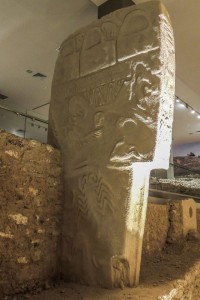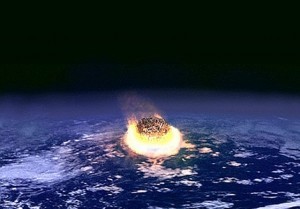Ancient symbols carved into stone at an archaeological site in Turkey tell the story of a devastating comet impact that triggered a mini ice age more than 13,000 years ago, scientists believe.
Evidence from the carvings, made on a pillar known as the Vulture Stone, suggests that a swarm of comet fragments hit the Earth in around 11000 BC.
One image of a headless man is thought to symbolise human disaster and extensive loss of life.
The site is at Gobekli Tepe in southern Turkey, which experts now believe may have been an ancient observatory.
Computer software was used to match carvings of animals – interpreted as astronomical symbols – to patterns of stars and pinpoint the event to 10950 BC.
Other evidence for the impact from a Greenland ice core suggests roughly the same time frame.
The cataclysm ushered in a cold climate lasting 1,000 years and is likely to have resulted from the break-up of a giant comet in the inner solar system.
Lead researcher Dr Martin Sweatman, from the University of Edinburgh’s School of Engineering, said: “It appears Gobekli Tepe was, among other things, an observatory for monitoring the night sky.
“One of its pillars seems to have served as a memorial to this devastating event – probably the worst day in history since the end of the Ice Age.”
The carvings appear to have remained important to the people of Gobekli Tepe for millennia, indicating an event that had a very serious and long-lasting impact, said the scientists whose findings are published in the journal Mediterranean Archaeology and Archaeometry.
A number of the pillar symbols suggest that long-term changes in the Earth’s rotational axis were recorded by the early astronomers using an early form of writing.
The discovery also supports the theory that Earth experiences times when comet strikes are more likely, due to the planet’s orbit intersecting with rings of cometary fragments.
source: BT.com
Ask me anything
Explore related questions








